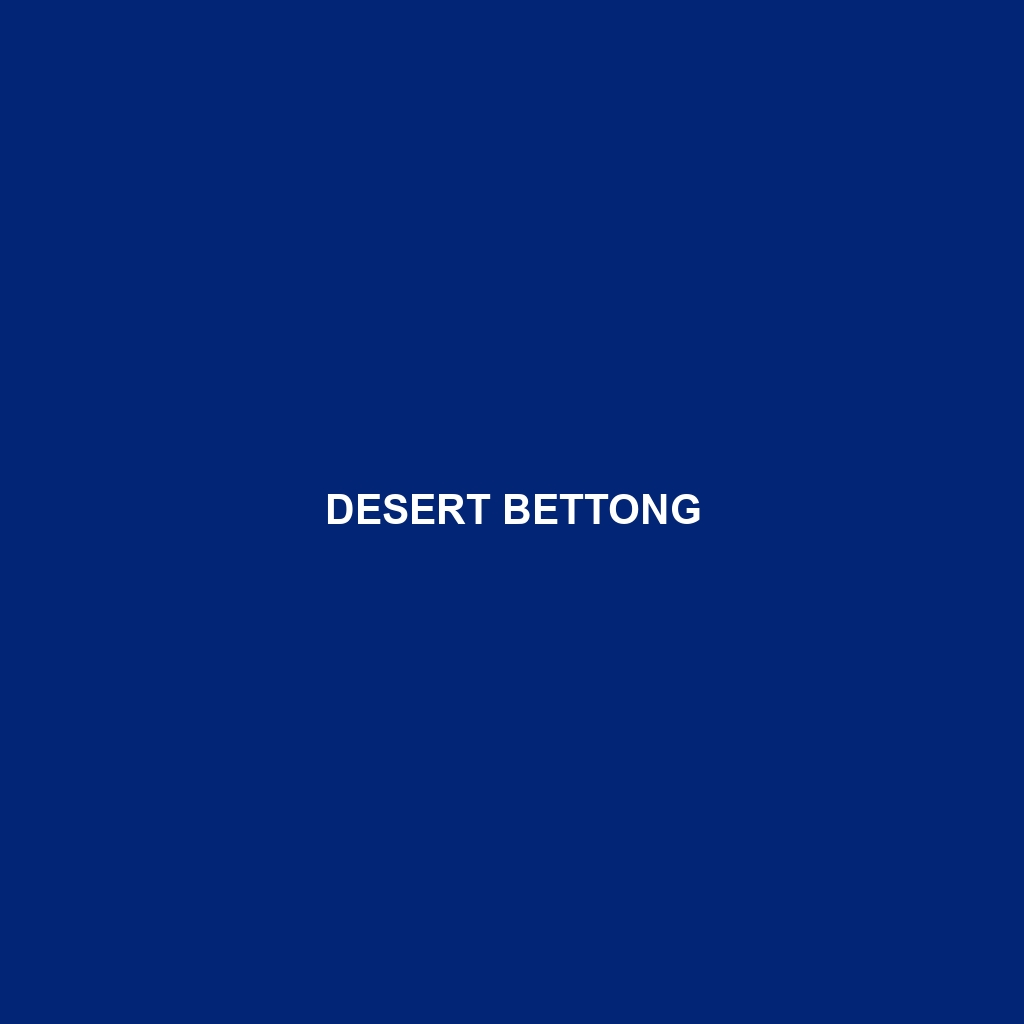Desert Bettong: An Overview
The Desert Bettong, also known as the Woylie or Brush-tailed Bettong, is a small marsupial native to the arid and semi-arid regions of Australia. This fascinating nocturnal creature is part of the Potoroidae family, which includes other small to medium-sized hopping marsupials. Remarkable for its adaptability to harsh desert environments, the Desert Bettong plays a vital role in the ecosystem by influencing soil health and plant propagation.
Physical Characteristics
Size: Desert Bettongs are petite, generally ranging from 30 to 45 centimeters in length, not including their tail, which can add another 30 centimeters. They weigh between 1 to 1.5 kilograms.
Coloration: Their fur is typically a sandy or reddish-brown color, blending seamlessly with their desert surroundings. The underbelly is usually lighter, often a creamy white or pale grey.
Special Features: One of the Desert Bettong’s most distinctive features is its brush-like tail, which is often used for carrying nesting materials. They have strong hind legs adapted for hopping, and their forelimbs are equipped with sharp claws for digging.
Behaviors
Social Interactions: Desert Bettongs are generally solitary creatures, though they may come together in small groups during the breeding season. Each individual maintains a territory, which they mark using scent glands.
Feeding Habits: These marsupials are omnivorous but have a diet heavily based on underground fungi, which they dig up using their sharp claws. They also consume roots, tubers, seeds, and insects. Their foraging activities are crucial for the dispersal of fungal spores, aiding plant growth and soil health.
Ecological Roles: By digging for food, Desert Bettongs play an essential role in soil aeration and nutrient cycling. Their foraging behavior helps to spread seeds and fungal spores, which contributes to the health and diversity of their habitat.
Habitats
Desert Bettongs are adapted to a range of arid and semi-arid habitats, including grasslands, shrublands, and open woodlands. They prefer areas with sandy soils, which facilitate their digging activities. They construct complex burrow systems to escape the extreme daytime heat and to protect themselves from predators.
Adaptations
Thermoregulation: To cope with the high temperatures of their desert habitats, Desert Bettongs are nocturnal, becoming active during the cooler nighttime hours.
Water Conservation: They have highly efficient kidneys that concentrate urine to minimize water loss, an essential adaptation for survival in arid environments.
Burrowing: Their ability to dig extensive burrows helps them stay cool during the day and provides protection from predators.
Conservation Status
The Desert Bettong is currently classified as Near Threatened on the IUCN Red List. Their populations have been adversely affected by habitat destruction, invasive species, and changes in fire regimes. Conservation efforts focus on habitat restoration, feral predator control, and breeding programs to bolster their numbers in the wild.
Fun Facts
Desert Bettongs have a unique reproductive strategy known as embryonic diapause, where the development of an embryo can be temporarily halted until environmental conditions are favorable.
They are capable of leaping over a meter in a single hop, aided by their strong hind legs.
Desert Bettongs have a symbiotic relationship with mycorrhizal fungi; their foraging helps these fungi grow, which in turn supports plant health and growth.
By understanding and appreciating the Desert Bettong, we can better support conservation efforts to protect this unique and vital species.
